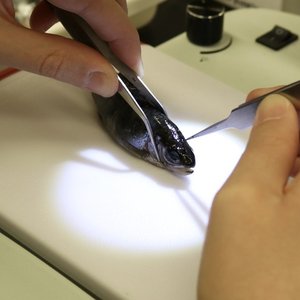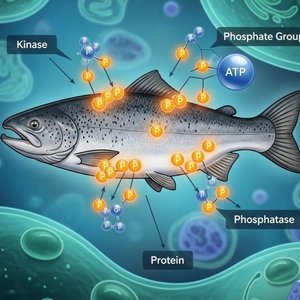Abstract
Although fish have been kept for more than three centuries as ornamentals, and the development of manufactured feed since 50 years ago has contributed to the tremendous growth of this hobby, nutrition of ornamental fish is based on extrapolation of results derived from food fishes under intensive farming conditions. Some research on nutrient (protein, minerals) requirements of growing freshwater ornamental species (live-bearers) in a production environment has been conducted, mainly in Singapore, with emphasis on the provision of live feed during the early stages of the life cycle. Protein requirements varied from around 30% dietary protein for growing omnivorous goldfish (Carassius auratus) to 50% for the carnivorous discus (Symphysodon aequifasciata). Whereas mineral (phosphorus, iron, magnesium, zinc) requirements have received some attention in the guppy (Poecilia reticulata), few researches have concentrated on vitamin requirements of ornamental species. Requirements for fatty acids have been conducted mainly on marine ornamentals (damselfish, seahorses), and accentuated the need for dietary supplementation of n-3 highly unsaturated fatty acids. Fish kept in public and home aquaria presents the problem of diversity of species in the same enclosure, each with its own specific requirements and needs. Maintenance energy levels of ornamental fish varied from 0.068 kJ per day for small neon tetras (Paracheirodon innesi) to 0.51 kJ per day for moonlight gouramis (Trichogaster microlepsis) kept at a water temperature of 26 °C. Research on nutrient requirements of ornamental fish urges for suitable measurements other than only growth rate in order to determine optimal dietary inclusion levels.
Authors
James Sales *, Geert P.J. Janssens
Laboratory of Animal Nutrition, Department of Animal Nutrition, Genetics, Breeding and Ethology, Faculty of Veterinary Medicine, Ghent University, Heidestraat 19, 9820 Merelbeke, Belgium
Publisher
Elsevier SAS and Ifremer/IRD/Inra/Cemagref
Published online by Cambridge University Press: 17 March 2011
DOI: http://dx.doi.org/10.1016/j.aquliv.2003.06.001
Download paper from here or from the link below (PDF).







